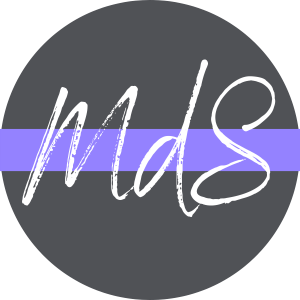In today’s digital age, having a well-designed website is crucial for the success of any business, including bed and breakfast establishments. A website serves as the online face of your B&B and plays a significant role in attracting potential guests. It is often the first point of contact for travelers looking for accommodation, and it can make or break their decision to book with you.
A user-friendly and visually appealing website is essential for creating a positive first impression and enticing guests to choose your bed and breakfast over your competitors. A well-designed website not only showcases your property but also provides important information about your rooms, amenities, and unique selling points. It should be easy to navigate, visually engaging, and provide all the necessary details that potential guests need to make an informed decision.
Dos: Create a User-Friendly Navigation System
One of the most important aspects of a well-designed bed and breakfast website is a user-friendly navigation system. Guests should be able to easily find the information they are looking for without getting lost or frustrated. A clear and concise navigation menu is essential for guiding visitors through your website and ensuring they can quickly access the information they need.
To create a user-friendly navigation system, start by organizing your website into logical categories. For example, you can have separate sections for rooms, amenities, location, rates, and contact information. Use clear and descriptive labels for each menu item to avoid confusion. Additionally, consider including a search bar on your website to allow guests to quickly find specific information.
It’s also important to ensure that your navigation menu is easily accessible from every page on your website. This can be achieved by placing it at the top or side of each page. Avoid using complex drop-down menus or excessive subcategories that can overwhelm visitors. Keep it simple and straightforward to enhance the user experience.
Don’ts: Clutter Your Homepage with Too Much Information
While it’s important to provide guests with all the necessary information about your bed and breakfast, it’s equally important not to overwhelm them with too much information on your homepage. A cluttered homepage can be visually overwhelming and make it difficult for visitors to find what they are looking for.
Instead, focus on creating a clean and visually appealing homepage that highlights the key features of your bed and breakfast. Use high-quality images that showcase your property and create a welcoming atmosphere. Include a brief introduction that captures the essence of your B&B and entices visitors to explore further.
Avoid overcrowding your homepage with excessive text or too many images. Instead, use concise and compelling copy that highlights your unique selling points and encourages visitors to learn more. Consider using bullet points or short paragraphs to convey information in a clear and concise manner.
Dos: Use High-Quality Photos to Showcase Your Property
When it comes to attracting guests to your bed and breakfast, high-quality photos are essential. They provide potential guests with a visual representation of your property and help them imagine themselves staying there. Investing in professional photography or learning how to take great photos yourself can greatly enhance the visual appeal of your website.
When taking photos of your bed and breakfast, focus on capturing the unique features that set you apart from other accommodations. Showcase the cozy bedrooms, inviting common areas, beautiful gardens, or stunning views. Use natural lighting whenever possible and pay attention to composition and framing.
Once you have high-quality photos, strategically place them throughout your website to create an immersive experience for visitors. Use large, visually appealing images on your homepage to grab attention and entice guests to explore further. Include photo galleries on individual room pages or amenities pages to give potential guests a comprehensive view of what you have to offer.
Don’ts: Use Low-Quality Images or Stock Photos
While high-quality photos can greatly enhance the appeal of your bed and breakfast website, low-quality images or stock photos can have the opposite effect. Low-quality images can make your property appear unprofessional or unappealing, while stock photos can make your website look generic and impersonal.
Avoid using low-quality images that are blurry, pixelated, or poorly lit. These types of images can create a negative impression and deter potential guests from booking with you. Invest in professional photography or take the time to learn how to take great photos yourself.
Similarly, avoid using stock photos that don’t accurately represent your property. Guests want to see authentic images of your bed and breakfast, not generic photos that could be found on any website. Stock photos can also create a sense of distrust and make potential guests question the authenticity of your property.
Dos: Highlight Your Unique Selling Points
Every bed and breakfast has unique selling points that set it apart from other accommodations. It’s important to showcase these unique features on your website to attract guests who are looking for something special and different.
Think about what makes your bed and breakfast stand out. It could be the location, the architecture, the history, the amenities, or the personalized service you offer. Highlight these unique selling points throughout your website to capture the attention of potential guests.
For example, if your bed and breakfast is located in a historic building, include information about its history and architectural features. If you offer unique amenities such as a spa or cooking classes, create dedicated pages that provide detailed information about these offerings. Use compelling copy and high-quality images to bring these unique selling points to life.
Don’ts: Use Generic Copy or Overused Buzzwords
While it’s important to highlight your unique selling points on your bed and breakfast website, it’s equally important to avoid using generic copy or overused buzzwords. Generic copy can make your website blend in with the competition and fail to capture the attention of potential guests.
Avoid using clichés or overused phrases such as “home away from home” or “hidden gem.” Instead, focus on creating original and compelling copy that accurately represents your bed and breakfast. Use descriptive language to paint a picture of the experience guests can expect when staying with you.
Additionally, avoid using excessive exclamation points or exaggerated claims that may come across as insincere or untrustworthy. Be honest and transparent in your copy, and let your unique selling points speak for themselves.
Dos: Provide Clear and Concise Information About Your Rooms and Amenities
When potential guests visit your bed and breakfast website, they are looking for specific information about your rooms and amenities. It’s important to provide accurate and detailed information in a clear and concise manner to help them make an informed decision.
Create dedicated pages for each room category and provide detailed descriptions of the features, amenities, and pricing. Include high-quality photos that showcase the unique characteristics of each room. Be transparent about any limitations or restrictions, such as maximum occupancy or pet policies.
Similarly, create dedicated pages for your amenities and provide detailed information about what guests can expect. This could include information about breakfast options, common areas, outdoor spaces, parking facilities, or any additional services you offer.
Don’ts: Leave Out Important Details or Misrepresent Your Property
While it’s important to present your bed and breakfast in the best possible light, it’s equally important not to leave out important details or misrepresent your property. Guests rely on the information provided on your website to make a decision, and any discrepancies can lead to disappointment or negative reviews.
Avoid leaving out important details such as room sizes, bathroom configurations, or accessibility features. Be transparent about any limitations or restrictions that may impact a guest’s stay. Misrepresenting your property can lead to unrealistic expectations and ultimately result in dissatisfied guests.
Dos: Make Your Contact Information Easily Accessible
Making it easy for guests to contact you is essential for providing excellent customer service and converting website visitors into bookings. Your contact information should be easily accessible on your website, allowing guests to reach out with any questions or to make a reservation.
Include your phone number, email address, and physical address on every page of your website. Consider adding a contact form that allows guests to send inquiries directly from your website. Respond promptly to any inquiries or reservation requests to demonstrate your commitment to excellent customer service.
The Dos and Don’ts of Designing a Successful Bed & Breakfast Website
In conclusion, designing a successful bed and breakfast website requires careful attention to detail and a focus on providing an exceptional user experience. By following the dos and avoiding the don’ts outlined in this article, you can create a website that attracts potential guests, showcases your unique selling points, and ultimately leads to more bookings.
Investing time and effort into your website design is crucial for the success of your bed and breakfast business. A well-designed website not only helps you stand out from the competition but also provides potential guests with the information they need to make an informed decision. By creating a user-friendly navigation system, using high-quality photos, highlighting your unique selling points, providing clear and concise information, and making your contact information easily accessible, you can create a website that effectively promotes your bed and breakfast and drives bookings.






